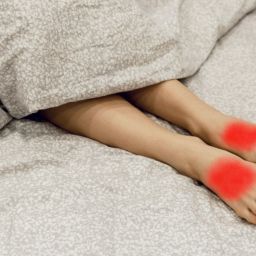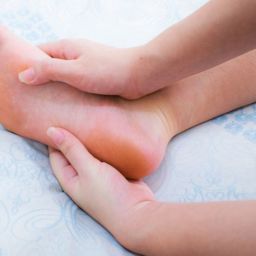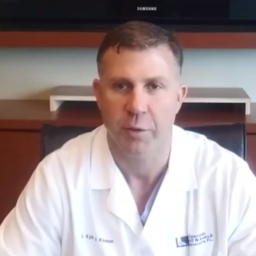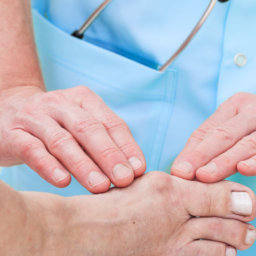
Anything that inhibits your ability to walk affects your quality of life. Those feet that carry you around from place to place every day are an asset. Wounds occurring on the feet, one of the most common issues seen by a podiatrist, can greatly impair the functionality of that asset. It is crucial to make preventive care, professional podiatric treatment and evaluation, and home care a part of your regular foot care routine. It is important to remember that podiatric wound care is always an option.
Prevention
The best way to avoid wounds is prevention. Self-screening and visual inspection of your feet will go a long way. Small and/or painless wounds on the feet can very quickly become larger, more dangerous wounds and infection sites if not monitored and promptly attended to. It is much easier to treat and heal a small wound than to try to heal a larger wound that may involve pain, discomfort, infection, scarring and limb loss.
Signs and Symptoms
Knowing what to look for is important. When you, a family member or friend evaluate your feet, look for any open wound. Even a small one, particularly in the diabetic patient, should be addressed immediately. If there is yellow, foul-smelling drainage, swelling, pain, redness or red streaking, your podiatrist should be consulted immediately.
Treatments
Upon examination, your podiatrist can determine the severity of your wound and work in tandem with you to find the best treatment plan. There are many options for wound care depending on the severity, size, location and nature of the wound. The general, podiatric and dermatologic health of the patient will also factor into the treatment plan. Treatments include debridement, off-loading, specialized footwear, topical and oral medications, proper dressings, skin grafting, and stem cell injections, among others.
- Debridement: Regular debridement of a wound to remove necrotic tissue is an effective treatment method because it allows the removal of necrotic tissue and increases the blood flow to the wound site, encouraging healing. Surgical debridement involves removal of diseased tissue, bacterial growth, wound edges and wound bed tissue performed manually with an instrument. This allows healthy tissue to grow in its place. For patients with bleeding disorders or those who are immune compromised, enzymatic debridement is also an option. Enzymatic debridement uses naturally occurring proteolytic enzymes manufactured by the pharmaceutical and healthcare industry specifically for eliminating devitalized tissue. The topical application of these enzymes to the wound surface breaks down necrotic tissue. Both are effective treatments, as wounds that have necrotic tissue present will not heal.
- Off-loading: Often a wound is caused and worsened by the pressure placed on a particular area of the foot. Depending on the patient’s gait, footwear or activities, there can be excessive pressure to the point that the skin in that area can be blistered, torn or otherwise compromised. This can lead to an open wound. If the pressure is not off-loaded, meaning eliminated or redirected, the wound will continue to grow and worsen. Diabetic shoes, offloading boots, braces and special inserts that can be added to footwear are ways to off-load pressure points. By reducing pressure and friction on the wound, healing is encouraged.
- Dressings: Wounds require proper dressing type, hygiene and regularity of changing. Your podiatrist will provide and inform you of the best material and handling of your dressing to encourage healing, but it is important to keep the dressing on to avoid introducing bacteria to the site, and to keep the wound moist. Specific topical medications to enhance healing may also be prescribed.
- Medication: When a wound becomes infected, it is often necessary for the patient to take oral antibiotics, in addition to the topical and other treatment options being implemented. Depending on the strain of bacteria and your allergies/tolerances, your podiatrist will prescribe the appropriate medication to help you heal.
- Stem Cell Therapy: With the growing knowledge and use of stem cell treatments, podiatric wound care has improved. Because of stem cells’ nature to divide and change into whatever type of cell is needed within the injured part of the body, it is highly effective and may provide faster healing than traditional methods. This treatment is typically performed in the podiatrist’s office by injection
- Skin Grafting: For larger non-healing wounds, skin grafting is another option. Sometimes the surface area of the wound is so large that the tissue is unable to fill in effectively. In these cases, a patient’s own skin, animal tissue or a synthetic tissue product may be applied to cover the wound and encourage healing. Amniotic grafts are now covered by medicare and many insurances, and they dramatically accelerate healing times, reduce scar tissue and prevent infection.
A Team Approach
Wound treatment can be complicated and requires that your podiatrist consider several methods of treatment along the way. This often means that other medical professionals should be consulted and included in the treatment plan. Vascular specialists can help increase blood flow to the wound to encourage healing. Infectious disease specialists can help determine underlying diseases that may be impeding healing. Primary care physicians can help the podiatrist to understand the total health of the patient and how that affects healing. It is important to take a team approach and utilize the skills and knowledge of others while treating a wound.
Find the Best Care for You
There are many treatment options and interventions in podiatric wound care today. Talk to your podiatrist about your concerns and they will work with you and your healthcare team to find the most effective treatment to get you back on your feet.





